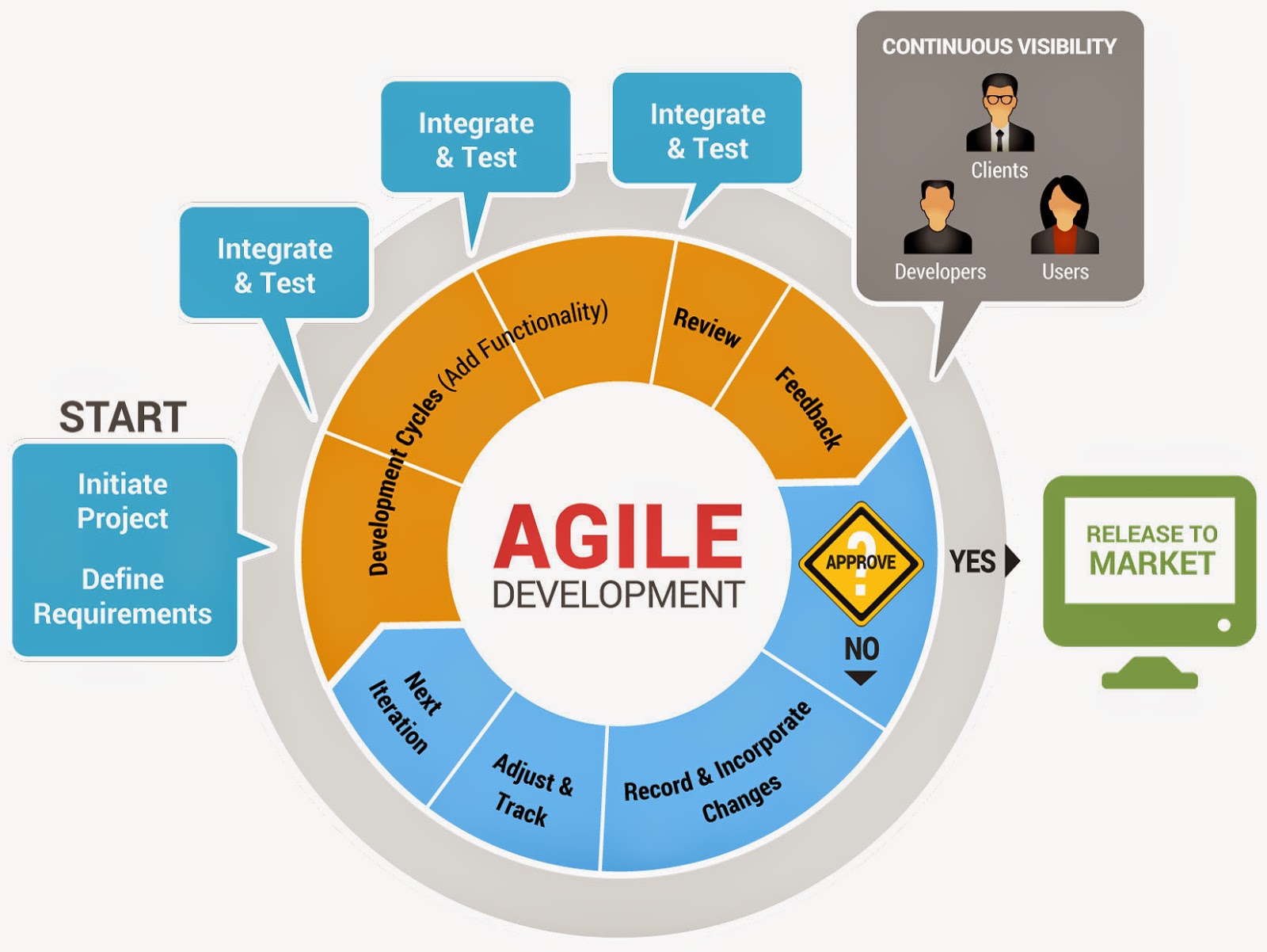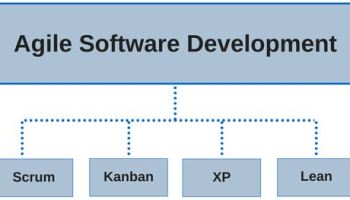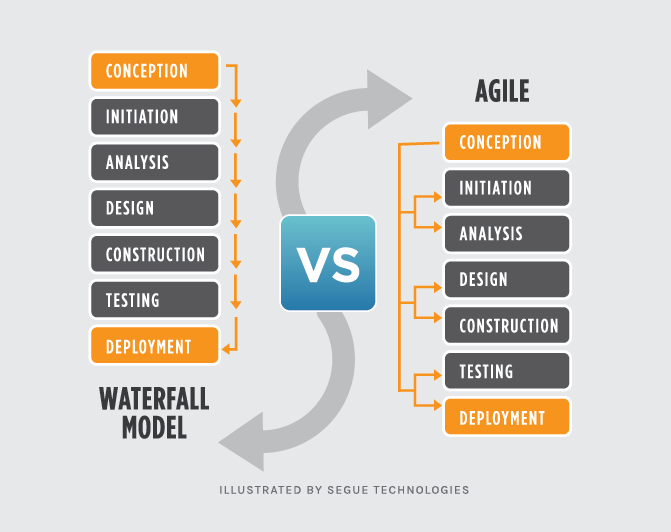Agile Technologies and Business Analysis Should Walk Hand in Hand
Let me, answer some questions regarding bAnalyst in general and how it can be mixed with Agile methodologies, in order to maximise the potential of both.
What do Business Analysis and Agile methodologies have in common? : moPharma

Agile Development
Agile methodologies do not exclude Business Analysts, as some experts may claim. Of course, a BA’s activity will be slightly different, but the same skill set and techniques are needed, regardless of the software development methodology.
Agile focuses more on individuals rather than processes, by regularly adapting to changing circumstances and, most important, by closely interacting with the software development team or mobile app development team and the client. However, this doesn’t mean that the requirements solicitation and the analysis process can be easily transferred from a dedicated BA to the entire mobile app development team.
The Business Analyst’s role has to change in the Agile world, in order to adapt to a more complex approach, that of software development/mobile app development. But the core activity of a BA is essentially the same, even in an Agile team.
The most successful attribute for a gymnast, other than flexibility is the agility which actually enables him to change directions (controlled) with floor routines, as a single slip up could cost him the competition. A gymnast cannot afford to lose time in transition, so does a business.
Just like gymnasts, businesses too need the ability to react at a faster pace, alertness that characterizes agile athletes and smart anticipation of the moves likely to be made by the rivals.
Thus, a successful business also has a key corporate attribute that pushes its pedals to the metal – the business agility, the new buzz.
How agility benefits businesses?
In the context of business, agility is the ability which enables an organization to adapt and respond to rapidly changing business environments, in cost efficient and productive ways and react to market opportunities to market products faster.
As per McKinsey & Company, the business agility benefits are-
Faster revenue growth
Greater and more lasting cost reduction
Management of risks and reputational threats.
So to achieve business agility, businesses have to make an investment in such a robust IT infrastructure that can be optimized and scaled per demand, that too cost- efficiently.
cloud computing technology– a mainstream IT delivery mechanism, is the greatest enabler of business agility that enables customers to become more agile, simplify their operations and improve collaboration, simultaneously.
How cloud delivers business agility?
According to the corporate decision makers surveyed by Absolute Data, cloud can make the entire organization more “business agile” and “responsive.”
The real value of cloud lies in the operational changes that it enables in the business environment. Let’s find out how cloud boosts business through business agility. It –
-
Delivers Competitive advantage – A managed cloud solution takes away the burden of running and maintaining infrastructure and facilitates faster access to compute capacity. Cloud enables business agility by giving:
-
Market Readiness-It enables a business to respond to the market changes more quickly and effectively, which in turn, fastens the process of launching new products and services in areas like predictive analytics and customer relationship management; and projects requiring speedy delivery, thus improving revenue growth and up-sell opportunities. This gives the business a lead over its competitors.
-
On the go access to data and resources– Cloud is like a central repository of data that allows accessibility to data and resources, anytime and anywhere, irrespective of any device. This trait eases collaboration and communication not only among team members but also with trading partners, globally.
Pier 1 Imports Inc., the Fort Worth, Texas–based retail company, enlisted the cloud to deliver a competitive advantage and an engaging shopping experience for customers. With Microsoft Azure Machine Learning Solutions, it became easy for them to quickly upload data, ask questions and get the insights to data operations, without hiring teams of data scientists or buying high budget hardware.
-
-
Reduces business complexity– Business agility is enabled by the cloud by reducing complexities in a company’s IT operations by simplifying their management and thus, reducing costs.
It fosters better delivery of internal resources that increases employee productivity and improves responsiveness to the customers. Cloud enables new and different ways of working, connecting and collaborating at a faster pace and also improves ability to access, share, analyze, and take apt action on data.
API accessibility of cloud platforms enables automation in IT management and easier provisioning in the cloud environment. Systems become more adaptive with tools like integrated business intelligence and various other IT monitoring tools. Cloud computing reduces time spent on managing and supporting infrastructure via automation, web consoles and APIs.
-
Accelerates rate of innovation – “The biggest impact of the cloud is the ability to accelerate the rate of innovation for the business,” says Frank Gens, senior vice president and chief analyst at IDC.
He says “When we get software through the cloud, we get updates and new features at three to six times the rate that we had with traditional software.” Cloud platform accelerates innovation by allowing companies to support product development and marketing programs at an increase pace, aligned with the goals of business.
Cloud business agility relationship also delivers ability to scale up and down as per business needs. The benefits of cloud are multiple and when combined with business agility adds more value.
If you have any doubt regarding the write-up, feel free to comment in the section below.
Information Technology Management:
- What role does a Business Analyst play in development using Agile methodologies?
- Are the product owner and the Business Analyst one and the same?
- Are Product Owners in Agile processes expected to deliver detailed requirements?
- Getting better at BA. What do you have to study?
- Which are the most useful websites for a Business Analyst in Technology/Software?
- How does Agile integrate the MO of a small company or team?
- Do the Business Analyst and the senior UX Designer’s roles overlap?
The main responsibility of a BA is to interact with the various stakeholders of a software development project and gather the requirements. In Scrum, this means working closely with the Product Owner and helping define the high-level product requirements and then document them in the form of specific Epics and Stories.
Moreover, the business analyst plays an important role in clarifying issues with the software developers and help them understand every aspect of what is demanded. Consequently, negotiation skills are very important.
It is not recommendable that the BA take the role of the Product Owner. The latter requires making various decisions, which the BA wouldn’t generally have the authority to make. Therefore, every time something important needs to be decided, the Business Analyst would have to ask the Product Owner. Which is often the CEO, especially in startups.
Regardless of how detailed the requirements provided by the Product Owner are, a Business Analyst should always take their time and use the proper techniques in order to best define the project parameters. Sometimes, even if the PO thinks they have a clear idea on what needs to be developed, there are always issues that get overlooked. That’s why a fresh perspective and a rigorous analysis of every requirement can benefit both parties.
Business Analysts may take up many roles, depending on the software development methodology used, the stage of the project or the analyst’s experience. Each one of these roles focuses on specific skills, that can sometimes differ. The most important ones are critical thinking, problem solving, communication and negotiation skills. The Business Analysis Body of Knowledge (BABoK) comprises a list of the most important skills to have and develop as a Business Analyst.
As with any profession, there are, of course, several organisations that provide certifications in Business Analysis. For example, the BCS Business Analysis Certification also provides the opportunity to participate in sessions with an accredited BCS trainer before taking the exam.
batimes.com is definitely one of the safest recommendations. Apart from the excellent resources and articles, the comment section might bring up some interesting ideas.You could also check the International Institute of Business Analysis website (www.iiba.org), where can be found diverse and relevant information.
To begin with, a small company or team should really research what Agile is and take their pick on the methodology they think might best suit the team or the mobile app development company.
Secondly, unless they already have someone with experience in Agile practices, they might consider getting some outside help. Otherwise, things might take a while to mature. A team needs time before it can perform, as adapting to new practices is not always easy. Of course, that adapting period could be less extensive if there’s an external coach to help throughout the process.
Although this question comes up a lot on forums and discussion groups, these 2 roles are not completely overlapping. One can not replace the other. Business Analysis does require some user experience knowledge, but its most important focus is to understand the client’s business needs and help them express the best product requirements meeting those needs. Of course, this involves extensive analysis, work and very good communication and negotiation skills.
A UX designer (senior or middle) focuses on the user’s needs, whereas the Business Analyst must take into consideration all the stakeholders of a project. He has to perform a rigorous analysis on what needs and requirements are the most important in achieving the business objectives.
Let’s just say that the focus of the BA is rather global, whereas that of a UX Designer is singular and restricted to the end-user.
If you are looking to build your next (or first) mobile app and need help with one or more of these steps, you’re in luck! The moPharma Group welcomes app owners at any stage in this process. Whether you are a startup or Fortune 50 company, we have the team and knowledge needed to deliver a fantastic mobile app. Please don’t hesitate to write us today.





Discuss about post